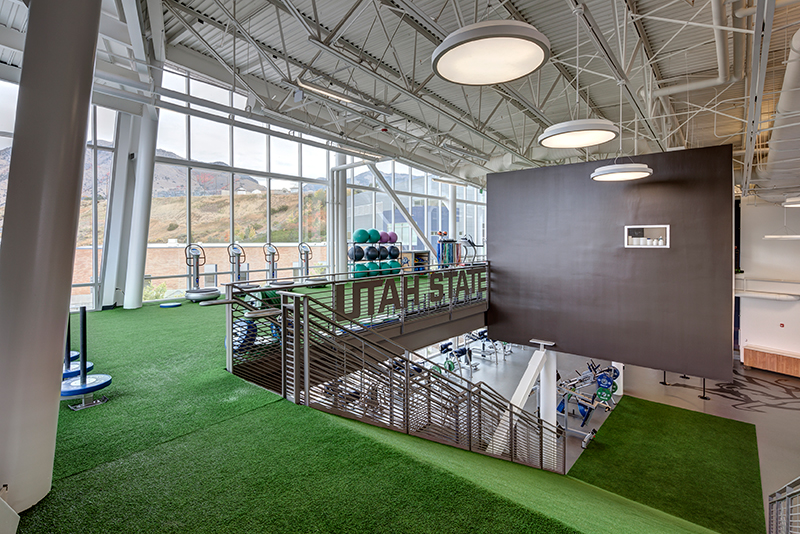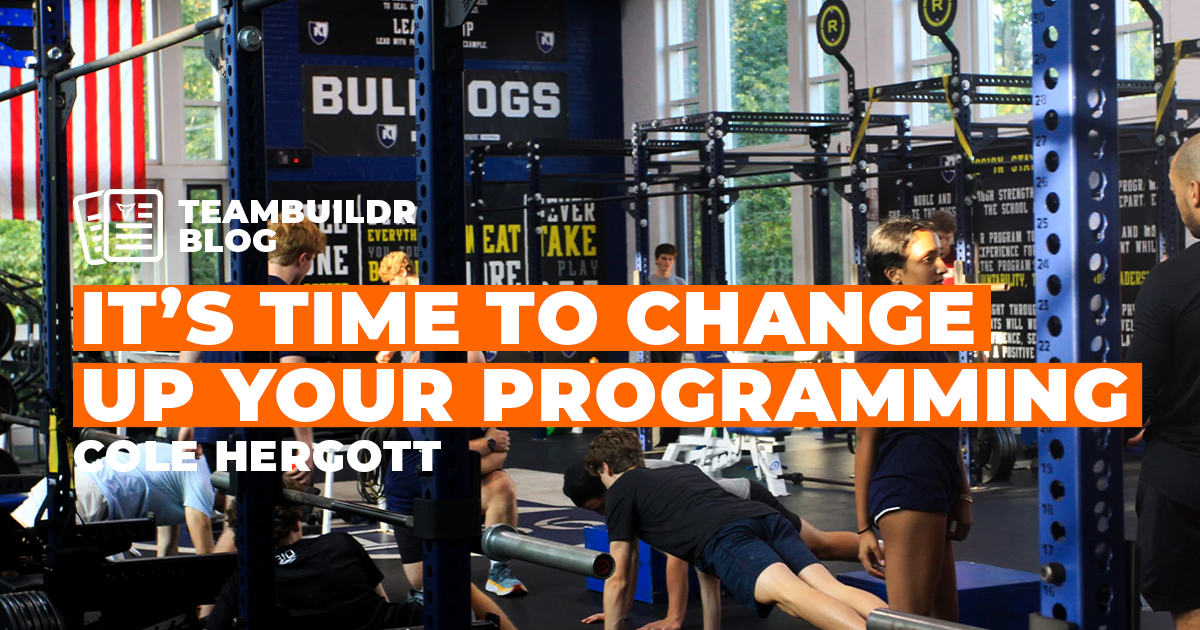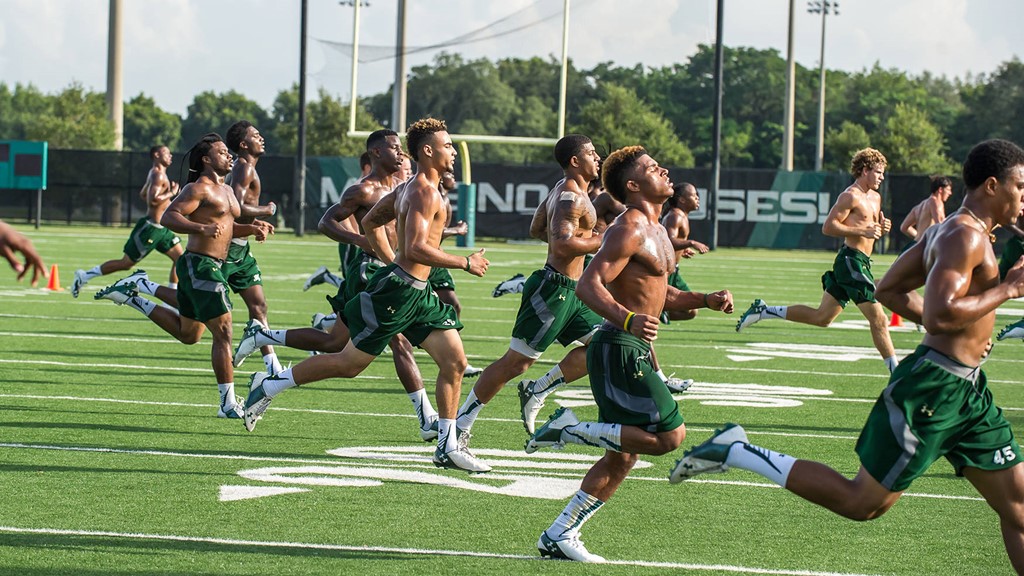The Performance Puzzle: Integrating Key Training Components
Sport performance is a complex realm. With so many pieces of the proverbial puzzle constantly orbiting around in uncertainty and unpredictability, many a time, it’s our best guess as we seek answers to the question: “How do we play the game BETTER?”
Add in that we’re human beings. By default, we are imperfect. We have thoughts, feelings, good days, bad days, and everything in between. We are complex beings. So as we navigate the complex realm of sport performance, keep in mind that we are also chaotic in nature. Where does this leave us?
With an understanding. There is no simple solution to a complex problem. Humans are complex. Sport performance is complex. Combine the two and you have endless complexities. It’s not about finding THE answer. It’s simply asking better questions to help optimally navigate through the chaos.
If you look at a puzzle piece, there really isn’t much to it. It’s an odd shape, maybe a little coloring, a shade perhaps. A puzzle piece on its own is rather useless. Heck, a pile of puzzle pieces on their own is useless. It’s only when we can understand the relationship of the puzzle pieces as they fit together that we can see a work of art.
The same can be said for human physiology, psychology, and sport. It’s only when we understand the relationship between all the pieces as they look to work together that are we able to reach elite-level performance. It’s finding magnificence through chaos.
The 4 Main Puzzle Pieces
Keeping things simple, we can look at sport performance as 4 pieces of a performance puzzle:
You’ll notice that the Physical and Psychological pieces are in red. It is these two pieces where I feel we as Strength & Conditioning Coaches can have the most impact. Put simply, we can heavily influence our athletes’ abilities to build mental confidence and physical capacity to better express sport skills on the field, court, rink, pool, or mat.
Proper Preparation
When working with athletes, especially at the high school or college level, it’s extremely important to educate them on the preparation process. Helping them understand the sport-training relationship as it pertains to building capacity; it’s a spectrum that simply shifts emphasis during different parts of the year while considering individual needs. It’s not a light switch; we don’t just turn off or on practices, games, training, and our recovery. The illustrations below look at both understandings.
Light Switch Understanding
Spectrum Understanding
Building Physical Capacity
I get it, some athletes are hesitant about training during their season. With multiple practices and games, it can certainly be stressful. It takes careful planning and flexibility to adapt to ensure athletes can still perform while building robustness and capacity.
Education is a huge component of building capacity. While many qualities are expressed (sprinting, changing direction, jumping, etc.) during practice, we must look at training through a different lens. We aim to “dose” athletes with the minimum repetitions of QUALITY work to ensure tolerance. In short, train at higher forces during appropriate times of the year that exceed gameplay so as to make the game easier.
Now, I’m not saying to simply max out or throw in plyometrics out of the blue. There has to be some logical reasoning behind the madness. Remember, sport performance is complex and the relationship to training is on a spectrum; there is simply a better time to dose certain qualities to certain limits throughout the season. By ensuring appropriate amounts of quality work are dosed throughout the year, we put hay in the barn in terms of reserves to fall back on for when it’s game time.
What About Injuries?
Let’s face it, shit happens. I know injury prevention is a hot buzzword these days, but NOBODY can truly prevent an injury from occurring. As physical preparation specialists, we simply look to build capacity to (hopefully) reduce the likelihood of injury from occurring AND (hopefully) reduce potential severity.
The best injury prevention is proper preparation, but that doesn’t mean it isn’t possible. Stay in the game long enough, you’ll see things go wrong. We simply look to delay the inevitable and reduce the severity if/when it occurs. To help build robust athletes, we must be diverse in our approach. Exposing athletes to multiple planes of movement, different stances, and a plethora of loading parameters can only help them build tolerance. Keep in mind that the more intensive an exercise, we must (by default) reduce complexity to express the skill at maximal efforts.
Maybe this is a hot take, but I feel that good rehab is just good training. In both instances, we look to walk the line of load tolerance to move the needle further to the right. Cross the line, you get hurt. Don’t come close enough, you don’t get a training effect and (by default) you likely regress. The graphic below illustrates this point across 3 different athletes.
Honing In On “The Mentals”
While we’d be hard-pressed to guarantee anything in the sport performance realm, we are confident that we can build, well, confidence in our athletes when in the weight room. There is a lot to be said about establishing trust in yourself from persevering through hard things and the weight room is the perfect spot to do just that.
Athletes can (in a controlled environment) better quantify certain variables and take pride in getting closer to the mark. They also learn a lot about themselves when they don’t; building resilient character is just as important (if not more important) than hitting some quality KPIs. By understanding how their attitudes impact their effort (and how efforts dictate outcomes), we can look to stack the mental bricks of performance within the walls of our weight room.
The Foundation of Recovery
This will probably seem boring but foundational recovery just comes down to 3 basic pillars:
- Quality Sleep
- Whole Foods
- Stress Management
Boring I know but these 3 avenues are so overlooked (or undervalued) in the fitness and performance industry. This isn’t to say other modalities or products can’t be valuable, they certainly can be. But in the grand scheme of things, they are simply additions, not replacements.
If you could bottle up 10 hours of quality sleep and sell it as a supplement, you’d make billions. Enforcing the importance of a good night’s sleep seems to get slept on these days with our attention focusing on other external modalities. Sleep is THE MOST important recovery modality we have, and it’s FREE! By simply getting consistent sleep averaging 7-10 hours per night, we can reduce the likelihood of injury, increase the output of training qualities (sprint times, jump heights, strength RMs) and improve the expression of sport skills (accuracy, economy, output, etc.). As a bonus, better mood and enjoyment have also been demonstrated.
When it comes to nutrition, there is a plethora of information that could be accessed to better pinpoint what eating habits and dietary selections may be best for certain individuals. However, we typically deal with high school and college athletes; the bottom tier of healthy eating is the foundation on which we look to focus.
From our standpoint, we try to emphasize a balanced diet based on as many whole foods as possible. Look to add greater amounts of quality protein and consider creatine supplementation. First and foremost, we simply try to review their current habits and ask the question: “Is how we are currently eating fueling us to perform our best?”. In most cases, this opens up the possibility for meaningful change with education and conversation. From there, we can better guide our athletes through subtle changes to help them better navigate their eating habits.
Stress is systemic. Your body doesn’t differentiate between running away from a lion or running away from your feelings. How we receive, process, and respond to challenges across the physical, mental, and emotional realms plays a huge part in our abilities to perform and recover. Better management of perceived stressors tends to lead to better performance outputs.
The question is how do we better manage stress? How can we better navigate the chaotic ups and downs of the everyday? Let’s face it, shit happens and sometimes it’s just out of our control. But the age-old truth still reigns supreme; it’s not what happens, it’s how you respond. So instead of diving down a rabbit hole, here are a few tips for managing stress.
- Maintain A Consistent Sleep Schedule
- Find Time To Get Outdoors
- Allocate Time To Do Enjoyable Activities
- Set Fixed “Work” Times
- Seek Help When Feeling Overwhelmed
Very broad strokes in those recommendations but very applicable to everyday life. Maintaining a structured schedule (whether it be practice, games, lifts, studying, etc.) can help relieve impromptu stress. Making additional time for healthy enjoyable activities can also improve mood and reduce stress. Finally, consistent quality sleep schedules improve recovery and stress response. So simple, it’s hard.
You’ll notice we didn’t dive too far into other modalities. Theraguns, ice baths, saunas, massage chairs, and all those sorts of items can be a great addition to recovery, especially if you feel good doing it. But they are just an addition. They should not be taking the place of sleep, quality nutrition, or basic stress management. Don’t step over hundred dollar bills to pick up pennies.
In Closing
To recap, there are no simple solutions to a complex problem. We simply navigate chaos as elegantly as possible in hopes of improving an outcome. We need to understand our role as performance coaches or S/C coaches; we build capacity for better expression of sport-relevant skills for longer durations of time. We don’t simply mimic the sport itself in hopes of improving transfer.
Understand that training qualities need time to develop. If all you ever do is practice and play games, you bash your head against the proverbial ceiling. Worse, you set yourself up for a higher risk of getting hurt. Implement appropriate training stimuli to better enhance the quality of skill expression; just because something “feels” hard doesn’t mean it has an effect. Sensation and stimulation are two different things.
Training becomes even more valuable as you understand its relationship to sport performance. Consider as many variables and limitations as possible to best plan the work you feel needs to be done and when. Dose it accordingly.
Finally, appreciate the complexity and do your best to find elegant simplicity. It’ll never be perfect and there will always be chaos to manage. As the saying goes: “the methods are many but the principles are few”. Do your best to navigate the chaos as you work to put the pieces of performance together for a work of art.
Subscribe to our blog
Subscribe to receive the latest blog posts to your inbox every week.
Related posts

What Type of Profession Are Strength Coaches Really In?

It is Time to Change Up Your Programming

